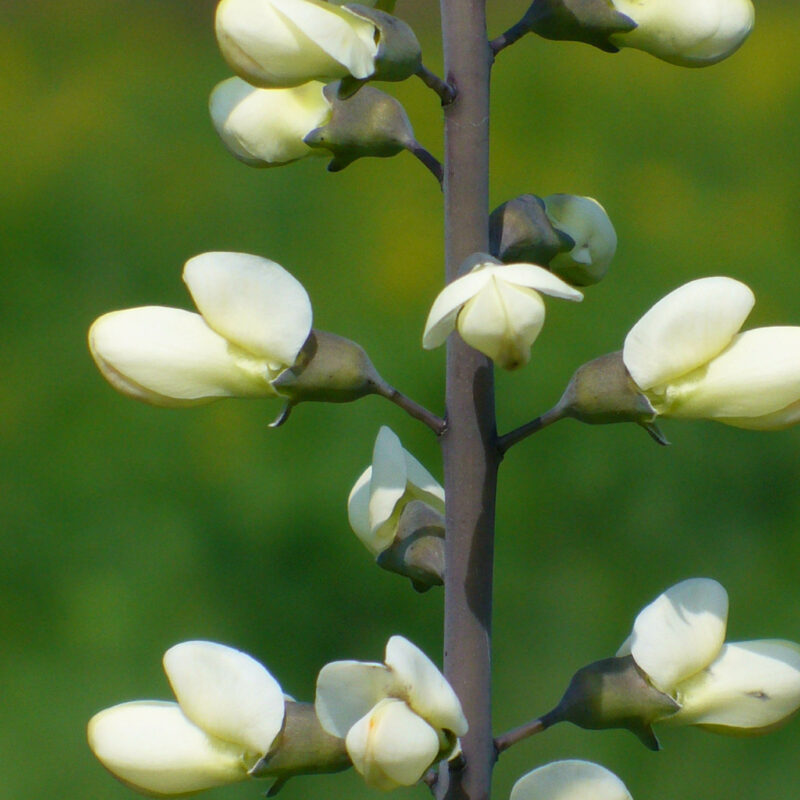White Wild indigoBaptisia lactea
a.k.a. Baptisia alba var. macrophylla
White Wild Indigo is a Minnesota Special Concern species due to habitat loss from agriculture but is available widely in native plant nurseries. It attracts many insects including bees, caterpillars, butterflies, and moths.
USDA symbol: BAAL
General Information
| Plant Type | Forb |
|---|---|
| Height | 2.5 to 5 feet |
| Light Exposure | Sun |
| Soil Moisture | Dry, Medium |
| Bloom Color | White |

Tolerances
| Flooding / Inundation Tolerance | Moderate |
|---|---|
| General Resilience | 7 |
| Salt Tolerance | Medium |
| Stress Tolerance | Drought Tolerant |
Pollinator Value: High
| Bloom Months | May to July |
|---|---|
| Larval Host of | Bees, Moths |
| Specific Pollinators Hosted | Dasylophia anguina, Megachile dakotensis, Uresiphita reversalis |
| Pollinator Benefit | Insect Pollinated, Provides Nectar, Supports Specialists |
Project Planning
| Project Type | Rain Garden |
|---|---|
| Coefficient of Conservatism | 6 |
| Herbivore Sensitivity | Low |
| Lifespan | Perennial |
| Rate of Spread | Slow |
| Soil Stabilization | Deep |
| Vegetative Reproduction | Clonal |
Range
| County | Anoka, Faribault, Fillmore, Goodhue, Hennepin, Houston, Mower, Olmsted, Ramsey, Scott, Wabasha, Washington |
|---|---|
| Ecoregion | Driftless Area, Lake Agassiz Plain, North Central Hardwood Forests, Northern Glaciated Plains, Northern Lakes and Forests, Western Cornbelt Plains |
| Approximate Eco Province | Eastern Broadleaf Forest, Laurentian Mixed Forest, Prairie Parkland, Tallgrass Aspen Parklands |
